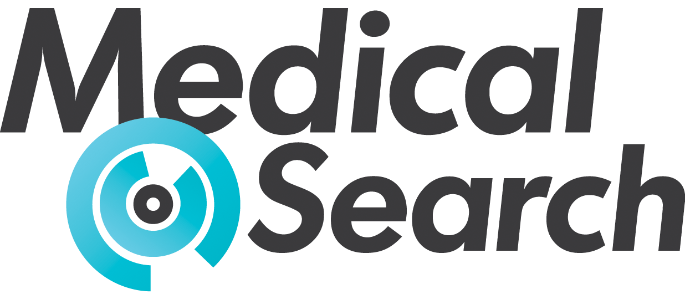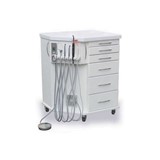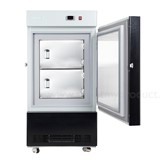Ensure staff certification and protocol compliance for hydrodermabrasion treatments in Australia. Stay safe, legal, and boost client trust today.
Key takeaways
- Hydrodermabrasion machine prices in Australia range from $5,000 to $15,000+, depending on brand, features, and compliance status.
- TGA approval is required for hydrodermabrasion devices classified as medical-grade, especially when used for therapeutic or corrective skin procedures.
- Australian clinics must comply with state-based regulations, including staff qualifications under the Hairdressing and Beauty Services Award and workplace safety legislation.
- Nationally recognised training such as the SHB50121 Diploma of Beauty Therapy includes competency units covering exfoliation technologies.
- Improperly trained staff can increase the risk of adverse events by up to 45%, including over-exfoliation, irritation, and post-inflammatory hyperpigmentation
- Standard protocols and hygiene compliance reduce cross-contamination risks, protect your business from liability, and improve client satisfaction.
Introduction
Hydrodermabrasion is one of Australia’s fastest-growing skin treatment modalities, offering gentle yet effective exfoliation and hydration through water-based microdermabrasion. Whether you're a clinic owner, dermatologist, or beauty therapist, selecting the right hydrodermabrasion machine and ensuring your staff are properly certified is crucial for both compliance and client outcomes.
This guide provides a detailed overview of what you need to know when purchasing a hydrodermabrasion machine in Australia, with a specific focus on compliance, safety standards, staff training, and operational protocols.
What is hydrodermabrasion?
Hydrodermabrasion is a non-invasive skincare treatment that combines exfoliation with vacuum suction and serum infusion. Unlike traditional microdermabrasion, which uses crystals or diamond tips, hydrodermabrasion uses water or solution-based exfoliants to remove dead skin cells and infuse active ingredients.
Key benefits:
- Suitable for sensitive skin types
- Promotes hydration while exfoliating
- Reduces fine lines, acne congestion, dullness
- No downtime; minimal side effects
Hydrodermabrasion machine types in Australia
1. Entry-level devices ($5,000–$8,000)
- Typically portable, single-function units
- Basic suction power and serum infusion
- Ideal for start-ups and solo practitioners
2. Mid-range systems ($8,000–$12,000)
- Dual or multi-functionality (LED, RF, oxygen therapy)
- Higher flow and suction control
- More durable and suitable for moderate-volume clinics
3. Premium systems ($12,000–$20,000+)
- Includes TGA-listed models with advanced protocols
- Often include training, warranty, and aftersales support
TGA compliance and legal obligations
The Therapeutic Goods Administration (TGA) regulates medical devices in Australia. If your hydrodermabrasion machine is marketed or used for therapeutic purposes (e.g. treating acne, melasma, or rosacea), it must be registered on the ARTG.
Key legal requirements:
- Confirm the machine has an ARTG number from your supplier
- Machines must be labelled and sold as per TGA guidelines
- Ensure imported devices meet Australian electrical safety standards (RCM mark)
- Keep compliance documentation on file for audits
You can verify listings at: www.tga.gov.au/australian-register-therapeutic-goods
Staff certification and qualifications
Australian law does not mandate a national licence for beauty therapists, but clinics must ensure staff have appropriate qualifications to perform hydrodermabrasion safely.
Recommended qualifications:
- SHB50121 Diploma of Beauty Therapy (includes dermal and exfoliation units)
- SHB40121 Certificate IV in Beauty Therapy (basic eligibility for skin services)
- CPD training with device-specific certifications from manufacturers
Employer obligations:
- Maintain records of qualifications and training
- Verify trainer credentials and course scope
- Conduct annual refreshers or CPD activities
According to a 2022 survey by Beauty Industry Insights Australia, 72% of clients are more likely to rebook when their therapist displays certification and explains treatment protocols clearly.
Standard operating procedures (SOPs) and compliance protocols
Implementing clinic-wide standard operating procedures improves consistency, safety, and legal defensibility. Your SOPs should include:
Treatment protocols:
- Pre-screening for contraindications (e.g. eczema, active acne cysts)
- Step-by-step usage instructions for the machine
- Post-treatment care guidance
Hygiene standards:
- Disinfection of handpieces and tubing after each use
- Use of single-use tips or properly sterilised reusable tips
- Hand hygiene and PPE usage
Documentation:
- Client consent forms
- Treatment logs and adverse event tracking
- Device calibration and maintenance records
State-by-state hydrodermabrasion regulations in Australia
While hydrodermabrasion is considered low-risk, each state and territory has its own expectations around hygiene, infection control, and business compliance:
- NSW:
- Regulated under Public Health Regulation 2022
- No formal licensing, but infection control compliance is mandatory
- Local council inspections and hygiene protocols required
- VIC:
- Covered under Health (Infectious Diseases) Regulations 2001
- No licensing for non-invasive procedures
- Staff should complete infection control training (e.g. HLTINFCOV001)
- QLD:
- Governed by Health Regulation 1996
- Clinics must follow strict infection control practices
- Equipment must be sanitised; consumables should be single-use
- WA:
- Regulated at local council level
- Business registration and inspection may be required
- Hygiene standards and staff training expected
- SA:
- No specific licensing under Public Health Act 2011
- Council registration may apply
- Infection control protocols and staff training strongly recommended
- TAS & ACT:
- No licensing for non-invasive cosmetic procedures
- General public health and hygiene regulations apply
- Infection control qualifications advised
- NT:
- Minimal regulation under Public and Environmental Health Act 2011
- Self-regulation encouraged through infection control and staff training
- Monitoring expected to increase with growing industry demand
Training from suppliers and manufacturers
Purchasing from reputable suppliers often includes on-site or online training.
Inclusions you should expect:
- Device handling and troubleshooting
- Facial mapping and skin typing
- Adverse event management
- Marketing and upselling guidance
Questions to ask suppliers:
- Is training nationally accredited or CPD-recognised?
- How long is the training session?
- Are refresher courses offered annually?
- Do you offer compliance templates or SOP samples?
Profitability and ROI
Treatment pricing (Australia):
- Single session: $120–$220
- Packages of 6: $600–$1,000
Operating costs:
- Serums and consumables: $10–$30 per session
- Staff hourly wage: $30–$50
- Machine depreciation/lease: $100–$300/month
Profit margins:
- Per treatment profit: $80–$160
- ROI period: 3–6 months for most clinics performing 10+ treatments/week
FAQs: Hydrodermabrasion staff certification and protocol compliance
Do I need a specific licence to perform hydrodermabrasion?
In most Australian states, you don’t need a licence but must employ qualified staff. A Diploma or Certificate IV in Beauty Therapy is considered best practice.
Can I operate a hydrodermabrasion machine at home or mobile?
Yes, provided the machine is compliant, and you follow health and safety regulations, including client consent, hygiene protocols, and appropriate insurance.
How do I know if a machine is TGA-approved?
Ask the supplier for the ARTG number, or search the Australian Register of Therapeutic Goods. Branded machines with medical claims must be listed.
What kind of insurance do I need?
Public liability and professional indemnity insurance covering beauty treatments are essential. Some insurers require proof of staff certification.
What happens if I use an uncertified machine or staff?
You risk client injury, business fines, insurance claim rejections, and reputational damage. Always choose certified machines and trained operators.
Final thoughts
Purchasing a hydrodermabrasion machine in Australia requires more than finding a good price. For long-term success, you must prioritise TGA compliance, staff certification, and treatment protocols. By investing in reputable equipment and ensuring your team is trained to national standards, you can reduce risk, improve results, and build trust with clients.
When you focus on regulatory readiness and clinical excellence, your hydrodermabrasion offering becomes not just a treatment—but a sustainable, revenue-driving service that meets Australia's stringent health and safety standards.















-160x160-state_article-rel-cat.png)












